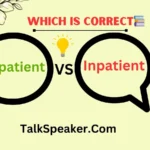Last updated on October 21st, 2024 at 03:47 pm
Punctuation is a critical aspect of writing that often confuses even seasoned writers.
One common area of confusion is the use of commas between subjects and verbs.
Misplaced commas can lead to misunderstandings and disrupt the flow of your writing.
This comprehensive guide will demystify the rules and exceptions, helping you master the correct use of commas between subjects and verbs.
Understanding Basic Grammar: Subjects and Verbs
Subjects and Verbs Defined
At the heart of every sentence are the subject and the verb. The subject is the person, place, thing, or idea performing the action, while the verb describes the action or state of being.
Examples of Subjects and Verbs in Simple Sentences
- The cat (subject) sleeps (verb) on the mat.
- She (subject) runs (verb) every morning.
Understanding the basics of subjects and verbs is crucial because their relationship determines the need for punctuation.
Importance of Subject-Verb Agreement
Subject-verb agreement ensures that the verb matches the subject in number (singular or plural). For example:
- Correct: The dog barks.
- Incorrect: The dog bark.
The Myth of Comma Use Between Subject and Verb
Origin of the Myth
The myth that a comma should be placed between a subject and its verb likely stems from misunderstandings about where pauses should occur in a sentence. While we might pause naturally when speaking, these pauses don’t always translate to written commas.
Why This Misconception Persists
This myth persists because it’s often reinforced by reading habits and informal writing practices. However, in formal writing, it’s crucial to adhere to standard grammatical rules.
Correct Rule Explanation
The rule is simple: do not place a comma between a subject and its verb. This rule helps maintain the sentence’s structure and clarity.
Common Misconceptions
Misplaced Commas in Simple Sentences
A common mistake is inserting a comma where it isn’t needed:
- Incorrect: The student, completed the assignment.
- Correct: The student completed the assignment.
Incorrect Examples and Corrections
- Incorrect: The dog, barks at strangers.
- Correct: The dog barks at strangers.
How Misconceptions Affect Writing Clarity
Misplaced commas can make sentences harder to read and understand. They interrupt the natural flow of the sentence, causing confusion.
Special Cases: When to Consider a Comma
Introductory Phrases and Clauses
When a sentence begins with an introductory phrase or clause, a comma is needed after this introductory element, not between the subject and verb.
- Example: After the meeting, John went to lunch.
Interrupting Elements
Commas are used to set off nonessential information that interrupts the flow of a sentence:
- Example: The car, which was red, sped past the stop sign.
Parenthetical Expressions
Parenthetical expressions are also set off by commas:
- Example: The cake, surprisingly, was delicious.
Examples and Clarifications
- Example: Although tired, she finished her work.
Clarifying Compound Subjects in Complex Sentences
Identifying Compound Subjects
A compound subject consists of two or more subjects joined by a conjunction (and, or, nor):
- Example: The dog and the cat are friends.
Examples of Compound Subjects
- Example: Both the manager and the employee agreed on the plan.
- Example: Either the teacher or the students will present the project.
Common Errors
- Incorrect: Either the teacher, or the students will present the project.
- Correct: Either the teacher or the students will present the project.
The Role of Nonessential Clauses and Commas
Definition of Nonessential (Nonrestrictive) Clauses
Nonessential clauses provide additional information that can be omitted without changing the sentence’s basic meaning. These clauses should be set off by commas.
Examples in Context
- Example: My brother, who lives in New York, is visiting us next week.
Proper Punctuation Practices
Always use commas to set off nonessential clauses to ensure clarity and readability:
- Example: The book, which was published last year, has become a bestseller.
Having trouble with English? We make it simple with easy tips and guides to help you improve.
Start learning and boost your skills Talk Speaker.
Editing for Clarity: Tips to Avoid Unnecessary Commas
Identifying Unnecessary Commas
Review your writing to identify and remove commas that do not serve a grammatical purpose:
- Incorrect: The cake, was delicious.
- Correct: The cake was delicious.
Techniques for Revising Sentences
Simplify your sentences and focus on the main subject and verb to avoid unnecessary commas:
- Example: Instead of “The project, which was complex, took a long time,” write “The complex project took a long time.”
Practical Examples and Exercises
- Practice by editing sentences to remove unnecessary commas:
- Incorrect: The committee, discussed the issue.
- Correct: The committee discussed the issue.
Proofreading Strategies
Step-by-Step Proofreading Techniques
- Read Aloud: This helps catch misplaced pauses.
- Check Subject-Verb Pairs: Ensure no comma separates them.
- Review Comma Rules: Familiarize yourself with basic comma rules.
Common Errors Checklist
- No comma between subject and verb.
- Correctly placed commas for nonessential clauses.
- Proper use of commas with introductory elements.
Tools and Resources for Effective Proofreading
- Grammarly: An online tool for checking grammar and punctuation.
- Hemingway App: Helps simplify sentences and improve readability.
- Merriam-Webster: A reliable dictionary for reference.
Advanced Grammar: Exceptions and Uncommon Scenarios
Situations Where Rules May Vary
In some complex sentences, traditional rules might not apply straightforwardly:
- Example: When a sentence includes a list, and the subject is repeated for emphasis, commas might appear unconventional.
Examples of Exceptions
- Example: John, the manager, and Paul, the assistant, attended the meeting.
How to Handle Complex Sentences
Approach each sentence individually, focusing on clarity and coherence:
- Example: In sentences with multiple clauses, ensure each clause’s subject and verb are clear and unambiguous.
Improving Writing Style Beyond Grammar Rules
Readability and Sentence Variety
Importance of Varied Sentence Structures
Variety keeps your writing engaging. Mix simple, compound, and complex sentences:
- Simple: The dog barked.
- Compound: The dog barked, and the cat hissed.
- Complex: Although the dog barked, the cat remained calm.
Examples of Enhanced Readability
- Original: The car was fast. It was red. It sped past the stop sign.
- Revised: The red car sped past the stop sign.
Strengthening Writing with Punctuation
Effective Use of Punctuation for Emphasis
Punctuation can change the emphasis and meaning of a sentence:
- Example: Let’s eat, Grandma! vs. Let’s eat Grandma!
Balancing Clarity and Style
Aim for a balance where punctuation supports both clarity and a smooth reading experience:
- Example: Use commas to break up long sentences, but ensure each comma serves a clear purpose.
Conclusion
Summary of Key Points
Understanding and correctly using commas between subjects and verbs enhances your writing’s clarity and professionalism. Avoiding unnecessary commas ensures your message is clear and engaging.
Final Tips for Mastery
- Practice by writing and revising sentences.
- Use tools and resources for checking grammar.
- Read aloud to catch mistakes and improve flow.
Encouragement to Practice and Improve
Mastery of punctuation is a continuous process. Keep practicing and refining your skills to become a more effective writer.
Additional Resources
Recommended Grammar Books and Websites
- The Elements of Style by Strunk and White
- Eats, Shoots & Leaves by Lynne Truss
- Purdue OWL (Online Writing Lab)
Online Tools for Grammar Checking
- Grammarly
- Hemingway App
- ProWritingAid
Practice Exercises and Quizzes
- Purdue OWL exercises
- Khan Academy grammar lessons
- Grammarly blog quizzes
FAQ Section
Common Questions About Comma Usage
- Can a comma ever be placed between a subject and verb?
- No, unless there’s an interrupting element that requires commas.
- What is a compound subject?
- A subject consisting of two or more nouns joined by a conjunction.
- How do I know if a clause is nonessential?
- If removing it doesn’t change the main meaning of the sentence, it’s nonessential.
Detailed Answers and Explanations
Understanding the nuances of comma usage can significantly improve your writing clarity and style. Use this guide as a reference whenever you’re in doubt about where to place commas in your sentences.
Interactive Section
Quick Quiz on Comma Usage
- Identify the correct sentence:
- a) The dog, barks at strangers.
- b) The dog barks at strangers.
- True or False: A comma should be placed between a subject and its verb in a simple sentence.
Feedback and Discussion Invitation
We’d love to hear your thoughts and questions on comma usage. Share your experiences and challenges in the comments below, and let’s learn together!
By following this comprehensive guide, you’ll master the correct use of commas between subjects and verbs, improving your writing’s clarity and effectiveness. Happy writing!

Sophie Mitchell, a seasoned English educator, brings her passion for language and years of teaching expertise to TalkSpeaker. With a knack for simplifying grammar and expanding vocabulary, she empowers learners to master English with confidence.




